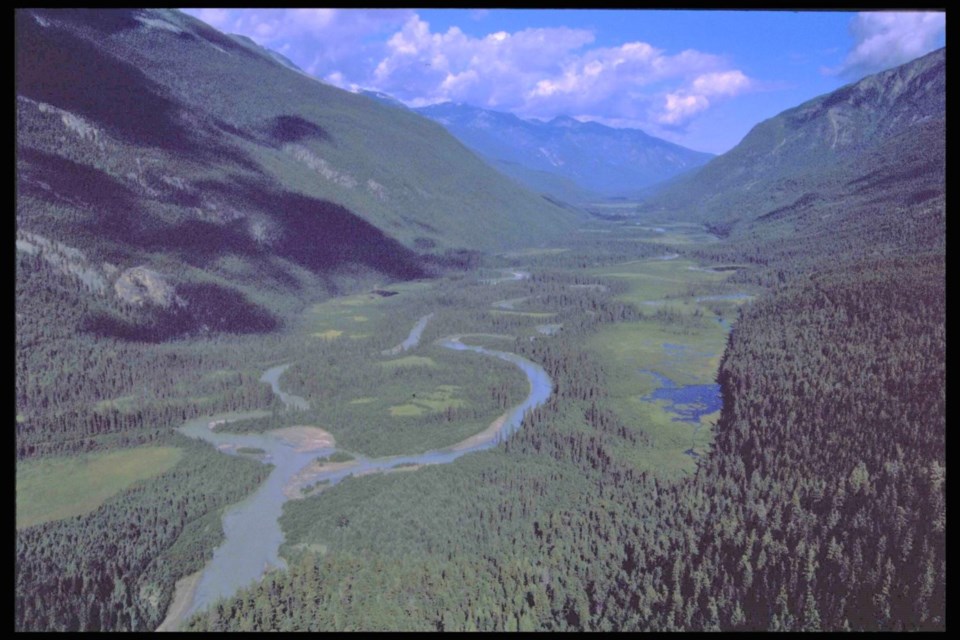Scott Hayes | [email protected]
Local Journalism Initiative Reporter
The Simpcw First Nation announced last month that it has declared British ColumbiaÔÇÖs Raush River Valley to be an Indigenous Protected and Conserved Area (IPCA).┬á
According to a press release issued in March, the SimpcwÔÇÖs self-declaration was made based on its inherent rights and jurisdiction that it has as the decision-makers and stewards over its unceded territory called Simpcw├║lÔÇÖecw.┬á
ÔÇťDesignating the Raush Valley as an IPCA is a commitment to Simpcw's intentions to conserve this biodiverse valley, and to protect S├şmpcwemc (Simpcw peoples) traditional and ongoing use of the area,ÔÇŁ the statement read.
The Raush River, also known as Rivi├Ęre au Shuswap, is a tributary of the Fraser River that drains a watershed of approximately 100,000 hectares.
ÔÇťCreating an IPCA in the Raush Valley is our long-term commitment to conserve lands and waters for future generations. The Raush is important to S├şmpcwemc historically and currently, and we will exercise our rights to control what happens in this valley. The area has had little resource development, and we intend to conserve it,ÔÇŁ said George Lampreau, K├║kwpi7 (Chief) for Simpcw in the press statement.
Lampreau added that the typical western approach to conservation would prevent Indigenous peoples from making meaningful decisions on their own lands, which is an extension of the colonialist practice of simply removing Indigenous peoples from those lands.
The first to congratulate the Simpcw on the Raush designation were the Fraser Headwaters Alliance (FHA) and Conservation North (CN). Those two organizations jointly issued their own statement, which noted that until this moment, the area was southern B.C.ÔÇÖs largest undeveloped, unprotected watershed and the largest undeveloped, unprotected tributary to the Fraser River.┬á
This protection preserves a wildlife corridor that connects the contiguous park systems of Wells Gray, Cariboo Mountains, and Bowron Lakes Park systems with the upper Fraser River.
CN director Michelle Connolly and FHA president Roy Howard indicated their gratitude to the Simpcw as the FHA has been advocating for this protection since the mid-1990s.  
ÔÇťWe're pretty excited about it for sure. It'll protect wildlife habitat, fish habitat, salmon and bull trout... it's a really good thing. We really want to praise the Simpcw for doing this,ÔÇŁ Howard said.
He added that while it will also work toward helping the Canadian governmentsÔÇÖ goal of protecting 30 per cent of the countryÔÇÖs land and seas by 2030 as per the declaration made at the recent COP15 conference on biodiversity in Montreal.
While Lampreau stated that protecting the Raush as an IPCA allows his people to ÔÇťcontinue to yecwmen├║lecw (take care of the land)ÔÇŁ as they have for time immemorial, Connolly cautioned that Indigenous Protected and Conserved Areas are basically symbolic designations that donÔÇÖt have any formal legal standing. She referred to the definition found within , the fundamental Indigenous Circle of Experts Report that came out in March 2018.
ÔÇťIt described the criteria first for Indigenous communities taking care of the land. I think a lot of communities define them differently, but the way we understand them is that basically an IPCA is an area that is protected from industrial development and conserved (i.e., there is no extraction), which often means no new roads, no new cut blocks, no new mines. That's generally how they're understood, but there's no legislation in B.C. that is an IPCA,ÔÇŁ she said.
The Simpcw promised to pursue additional protection mechanisms, according to the statement. They have obtained support for this IPCA and for additional work to develop Indigenous Management Approaches for the valley from relevant industry and government partners as well as neighbouring First Nations.




